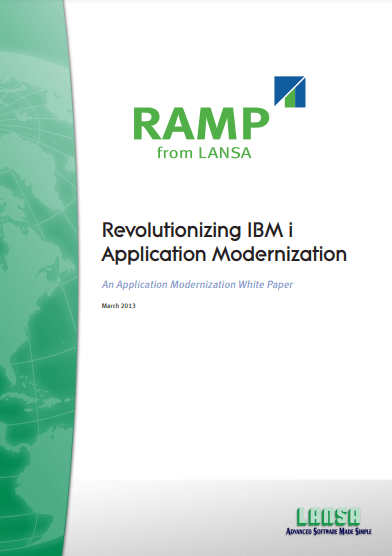In 2014, Forrester noticed a set of platforms with a distinct approach to software development, one that minimizes, in some cases, to zero, the amount of coding necessary for a project. As a result, they coined the term “Low-code” to describe them. Since then, we’ve seen an increase in low-code platform adoption, as developers leverage their visual and declarative development techniques to build more efficient software a lot faster and ultimately boost productivity.
Coincidentally, this mass adoption corresponds with an increasing need for digital transformation. Technology advancements, evolving customer expectations, and changing market conditions mean that businesses must become more agile and adapt rapidly to survive. In most cases, this means developing and deploying more software solutions faster. It also means incorporating modern technologies and modernizing legacy systems.
Table of Contents
COVID and the Rise of Low-code
In 2020, the Covid-19 pandemic brought the world to a complete halt. Organizations had to suspend operations. This, in turn, resulted in budget limitations, especially for digital transformation initiatives. What it didn’t change was the fact that digital transformation became a prerequisite for survival.
To address this need, low-code platform vendors began offering modernization solutions that required less money, time, and training to implement. They gave organizations the ability to increase their financial commitments to reflect the value that they were getting. This, alongside the ability to empower both IT and non-IT staff to build and deploy software solutions faster, further increased low-code adoption.
However, even with low-code platforms, developers are encountering productivity barriers as technology advances. Depending on the use case, sometimes it’s just faster to write code. Sometimes it’s faster to use declarative development techniques. Sometimes you need both. This is because adopting a product has to be part of an overall strategy for software delivery.
But, if you’ve built your strategy around a product and encounter productivity problems, what’s next?
In this article, we’ll discuss the next big thing in low-code platform productivity.
How Can You Overcome Low-code Productivity Challenges?
Generally, low-code platform vendors design their products for no-code. They want their customers to be able to deliver software without any coding at all. That can increase productivity in some cases, especially when building simple applications. You may, however, encounter situations where you need to write code or combine traditional and low-code development techniques for optimum delivery. This is where language-based low-code platforms, the next big thing in low-code platform productivity, come in.
To overcome low-code productivity barriers, you need a mix of visual development and coding. This way, when it makes sense, you can work with the declarative development tools. You can also exit to traditional coding for the portions of your applications that need it.
Language-based low code allows developers to write code in a low-code solution. This is one of the most powerful application-creation processes available to developers today. It combines the benefits of low code’s quick application creation process with the benefits of traditional programming’s ability to solve complex integrations and problems. This is where LANSA thrives with a language-based low-code solution like Visual LANSA.
Learn more about the IBM facts and features and how LANSA can help transform your existing application into modernized apps.
How Can You Maximize Productivity With Visual LANSA?
Visual LANSA is a language-based low-code solution. In fact, you could make the case that it is the first enterprise-ready low code solution. It combines the flexibility and control of traditional programming with the benefits and concepts of low-code principles. Using the Visual LANSA platform, you can stay inside the IDE to create a solution for all your complex processes and custom integration needs. A developer can learn one language and start creating enterprise applications at speed with low code.
Here are some of the ways Visual LANSA can help you maximize productivity:
Increased Flexibility
Using the programming language inside the IDE gives LANSA greater flexibility. You can use the same programming language for server-side and client-side applications and objects. In traditional coding, a developer may use PHP as the server-side language and a combination of Javascript and HTML/CSS for the client-side. Similarly, in model-based low-code, a developer can create the client-side portion in the low-code IDE. After that, they would have to code a separate, external connector depending on how complex the data retrieval is. With Visual LANSA, however, they code the entire application in one IDE using one language. Visual LANSA is a single language platform for creating any application. Whether you’re deploying to mobile, the web, a server, or locally, it doesn’t matter.
Increased Productivity
Visual LANSA increases the speed of the application-creation process over traditional coding. It automatically creates lines of code simply by having you answer a few questions. Your answers to those questions let Visual LANSA automatically create a server module or reusable part any other application can reference. So not only do your developers have to write less code, but they can create programs, functions, and modules that can be reused in other applications. Visual LANSA even uses the same process to create entire enterprise frameworks and web applications. It really is that simple, you answer a few questions, and the platform creates your structure and layout. By using Visual LANSA, your developers can write up to 10x fewer lines of code compared to traditional coding. Moreover, they retain the ability to code complex solutions if they need them. That is something other low-code platforms simply cannot do.
Future Proof
As web technology changes and new, more efficient programming languages come into use, Visual LANSA applications remain unaffected. Visual LANSA separates the coding language from the underlying technology that runs the applications. In essence, Visual LANSA can easily keep up with web technology without ever impacting your developers. The code for how a Visual LANSA application runs on the web can change, but the underlying code that executes the processes and logic remains unaffected. This design model ensures that Visual LANSA is future-proof and eases any fears that Visual LANSA applications will be outdated years down the road.
Visual LANSA can be a cloud-based solution, but you can also install it on-premises. It doesn’t matter if it is on a Windows server or IBM i. In fact, Visual LANSA is the only low-code solution that can be installed locally on an IBM i. With the flexibility to install Visual LANSA in-house and run applications locally, you never have to worry about losing cloud service should a platform fold or stop being supported. Visual LANSA ensures that your applications will run well into the future without worry.
Take a look at the challenges that come with both a traditional and low-code IBM web app in this guide.
Does LANSA Have a Proven Track Record?
Compagnie Générale d’Affacturage (CGA), a wholly-owned subsidiary of the Société Générale Group and a member of the International Factors Group, is a major player in the French factoring market with a sales turnover of billions of Euros. CGA uses LANSA for web, integration, and other development projects.
According to Christophe Dirlik, IT manager at CGA, “I do not regret this choice at all, as we have not had any concerns since. LANSA is well integrated by all the teams. In the event of any new development, one does not even ask the question; LANSA is the sure choice. My trust is very reasoned and based on the results which have led me to follow the product as it has evolved.”
“My experience is that building applications with the integrated LANSA toolset is much more reliable than traditional development tools. The risk was very low.” He added.
To learn more about how CGA dominates its market by rapidly developing and delivering software solutions using Visual LANSA, here’s the complete Case Study.
Are You Ready to Boost Your Productivity?
Low-code platforms enable developers and citizen developers to build and deploy applications a lot faster than traditional development tools and techniques. However, some use cases require that you write code. In this case, you need a software delivery strategy that allows you to switch seamlessly between low-code and traditional development, or better still, combine both methods.
Visual LANSA offers a single IDE for both low-code and traditional development. This way, you can easily write code for portions of your application that require coding and drag and drop for portions that make sense to do so. LANSA has a proven track record for helping enterprises reach their productivity potential. In fact, most of our customers report over a 10X increase in productivity using Visual LANSA compared to traditional development tools. Are you looking to record such productivity gains? Contact us. You can also try out Visual LANSA for free.








0 Comments